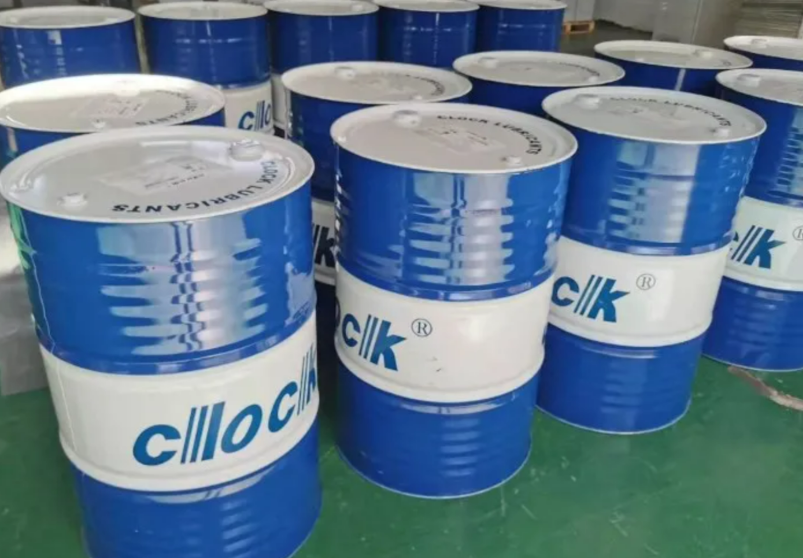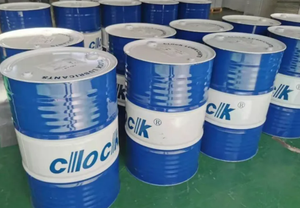
Introduction to the main inspection standards for heat transfer oil Inspection and certification services for factory audits and inspections
Thermal oil, as an industrial heat transfer medium, its quality directly affects the safe operation and energy efficiency of the heating system. The quality inspection of thermal oil is a systematic process that involves quality control throughout the entire process from raw material entry to product exit. This article will deeply analyze the factory inspection and inspection process of thermal oil, the key points of quality control, and the testing standards, providing a comprehensive reference guide for purchasers, quality inspectors, and production enterprises in terms of quality management.
I. Basic Knowledge of Thermal Oil and Pre-Inspection Preparation
(1) Characteristics and Classification of Thermal Oil
Thermal oil is a heat carrier used for indirect heat transfer. It has high-temperature stability, oxidation resistance, and excellent heat transfer performance. It can be classified into mineral-based thermal oil and synthetic thermal oil based on composition, and into low-temperature, medium-temperature, and high-temperature thermal oil based on usage temperature.
(2) Preparations for Factory Inspection and Goods Inspection
Technical document review: Review product specifications, raw material certifications, production process records, and previous batch test reports
Verification standard confirmation: Clearly define the applicable national standards (such as GB 23971, GB 24747, etc.) and the customer's specific requirements
Calibration of testing equipment: Ensure that devices such as viscometers, flash point meters, acid value testers, and residue content testers are within the calibration validity period.
Sampling plan determination: Based on the batch size, the sampling quantity and acceptance criteria are determined in accordance with the GB/T 4756 standard.
II. Key Points for Thermal Oil Factory Audit
(1) Quality Management System Audit
Check whether the factory has established a complete quality management system (ISO9001 certification)
Review the supplier management procedures, especially the evaluation records of key raw material suppliers such as base oil and additives.
Review the production process control documents and their implementation status, with a particular focus on key processes such as blending procedures, filtration steps, and filling processes.
Evaluate the effectiveness of the control procedures for non-conforming products and the corrective and preventive measures.
(2) Key points of on-site production inspection
Raw material storage management: Verify the storage conditions of base oil and additives, as well as the measures for temperature and humidity control.
Production process control: Evaluate process parameters such as blending temperature, stirring time, and filtration accuracy.
Filling workshop: Check filling accuracy, packaging integrity, and batch identification
Laboratory testing: It was confirmed that the testing equipment was complete, the testing methods were standard, and the records were complete and traceable.
III. Key Inspection Standards for Thermal Oil
(1) Moisture Content Testing
Importance of Testing:
Excessive moisture can lead to boiling oil phenomenon, causing fluctuations in system pressure.
Accelerate the oxidation of the oil and shorten its service life
Affecting heat transfer efficiency and increasing energy consumption
Detection method:
Follow the standards of GB/T 260.
Determine the moisture content by distillation method
Passing standard: Moisture content ≤ 500mg/kg
On-site rapid testing:
Use a portable moisture analyzer
Make an initial assessment of the quality status of the oil product
(2) Viscosity Index Measurement
Detection Significance:
The change in viscosity reflects the changes in the molecular mass and structure of the heat transfer oil.
Pyrolysis causes the viscosity to decrease, while polymerization and oxidation cause the viscosity to increase.
Affecting the pumping performance and heat transfer efficiency
Testing standards:
According to the GB/T 265 standard for determination
The kinematic viscosity at both 40℃ and 100℃ needs to be tested.
The rate of change should be controlled within ±15%.
Seasonal considerations:
Cold regions focus on low-temperature viscosity
The operation process accompanied by cooling requires special monitoring.
(3) Acid Value Determination
Detection Objective:
Reflect the degree of aging of the heat transfer oil
Monitor the oxidation status of the oil product
Early warning system for corrosion risks
Detection method:
Follow the standards of GB/T 4945.
Determination by potentiometric titration method
The rate of acid value change is ≤ 0.1 mgKOH/g
Trend Analysis:
Create a graph showing the trend of acid value changes
Detect abnormal fluctuations in a timely manner
(4) Ash Content Testing
Importance of the Test:
Reflecting the residual substances remaining after the evaporation and cracking of the heat transfer oil
Indicates the tendency for the formation of macroporous carbonaceous sediments
Determine the degree of oil aging
Detection method:
According to the GB/T 268 standard for determination
Ash content ≤ 0.05%
The commonly used method abroad for detecting insoluble substances in acetone or pentane is...
Preventive measures:
Regularly monitor the trend of residual carbon changes
Carry out system cleaning in a timely manner
(5) Flash Point Testing
Safety Implications:
Key security indicators
Reflect the possibility of the formation of volatile products and combustible gases
Ensure operational safety
Testing standards:
According to the GB/T 267 standard for determination
Flash point of opening ≥ 100℃
The closed flash point meets the product specification requirements.
Safety Alert:
If the flash point drops by more than 10%, an immediate investigation into the cause is necessary.
Establish a safety early warning mechanism
IV. Other Important Testing Items
(1) Distillation Test
Testing Objective: To evaluate the volatility of the oil product
Testing standard: Follow GB/T 6536.
Passing standard: The distillation range complies with the product specifications.
(2) Sulfur Content Testing
Testing objective: To assess corrosiveness and environmental performance
Testing method: Follow GB/T 11140.
Control requirement: Sulfur content ≤ 0.2%
(3) Oxidation Stability Test
Test significance: To evaluate the service life of the oil product
Testing method: Follow GB/T 12581.
Evaluation indicators: Changes in acid value and viscosity after oxidation
V. Inspection Rules and Quality Determination
(1) Sampling Inspection Plan
Sampling standard: Follow GB/T 4756
Sampling quantity: At least 3 samples should be taken from each batch.
Sample processing: Avoid contamination and oxidation
(2) Quality Grade Evaluation
Premium Grade: All indicators exceed the national standards.
First-class product: The main indicators meet national standards.
Qualified product: Basic indicators comply with national standards.
Non-conforming product: Key indicators exceed the allowable range.
(3) Handling of Abnormal Situations
Establish an alarm mechanism for abnormal data
Establish a procedure for handling non-conforming products
Implement corrective and preventive measures
VI. Packaging, Storage and Transportation Requirements
(1) Packaging Inspection
Packaging containers: Clean, dry, and sealed properly
Identification is complete: product name, batch number, production date and other information are clearly displayed.
Protection measures: Adequate measures for moisture prevention and oxidation prevention have been implemented.
(2) Storage Management
Storage environment: Cool, dry, and well-ventilated
Storage period: Clearly indicate the shelf life and follow the principle of "first in, first out".
Regular inspection: Regular quality checks of inventory products
(3) Transportation Requirements
Transportation protection: Waterproof, sunproof, and shockproof
Loading and unloading procedures: Handle with care, avoid damaging the packaging.
Transportation Record: Comprehensive Record of Transportation Process Conditions
VII. Quality Monitoring During Use
(1) Online Monitoring
Establish a regular inspection system
Set the warning values for key parameters
Implement trend analysis management
(2) System Maintenance
Regular system cleaning
Replace the oil in time
Optimize operating conditions
VIII. Conclusion
The quality inspection of heat transfer oil is a complex project involving multiple physical and chemical indicators, safety performance, and long-term stability. The inspection personnel need to have a comprehensive understanding of product standards, inspection methods, and key quality control points in order to effectively control product quality. Manufacturing enterprises should establish a complete quality management system, especially strengthening control in aspects such as raw material control, process optimization, and product inspection, to ensure that the products meet national standards and customer requirements.
分享这个商品

Introduction to the main inspection standards for heat transfer oil In
Thermal oil, as an industrial heat transfer medium, its quality directly affects the safe operation of the heating system and energy efficiency.
